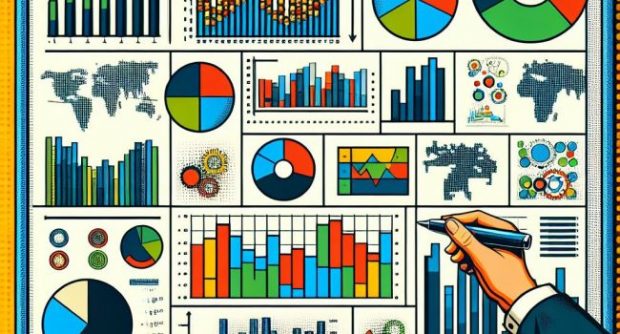Predictions 2024: Data Futures
by on 20th Dec 2023 in News

As we move into 2024, the question persists – how can advertisers balance privacy and personalisation within the data conundrum?
The ad tech sector has always been at the forefront of innovation, leveraging data analytics to optimise advertising strategies and maximise return on investment. In recent years, we have witnessed significant transformations, from the rise of programmatic advertising to the increasing importance of privacy and data security.
Striking the balance between personalisation and data privacy remains a challenge for many, but time is running out to ensure new solutions are in place. As the industry navigates the challenge ahead, the door to harnessing data in new, innovative ways further opens. Now is the time for more innovation, testing, and learning.
So, what does the future hold for data in the upcoming year? We asked some experts from across the industry.
Marketers need to jump at the opportunity to explore scalable solutions

2024 is going to start with a sharp wake-up call for marketers. From January, Google is set to disable third-party cookies. While this shouldn’t be news to the industry, nearly half of marketers know little to nothing about available cookieless and ID-less solutions.
Marketers have been distracted by the latest emerging tech – from CTV, the Metaverse, and of course, generative AI. The upshot is that brands and agencies alike have lost valuable time in preparing for the loss of the cookie and its impact on their marketing efforts. Advertisers can no longer afford to postpone this issue, and time is of the essence with the new year around the corner.
They need to stop fearing the future and jump at this opportunity to explore scalable solutions that will allow them to accurately target audiences without relying on identifiers. So come the new year – they will be ready.
Raphael Rodier, global chief revenue officer, Ogury
Privacy-centric forms of measurement will come to the fore

My prediction for next year is the culmination of what we’ve already seen in 2023.
With cookies finally disappearing in 2024, the wider process of signal loss will roll on regardless – IP addresses, link decoration and mobile SDKs will face restrictions and further challenges. Meanwhile, brands will continue exploring what more they can do to make use of their first party data for targeting, in the most customer-centric way.
Finally, newer, more privacy-centric forms of measurement will come to the fore, such as interoperable private attribution and Google’s Privacy Sandbox Attribution. These will undergo rigorous testing as alternatives to current models.
Hannah O’Neill, VP sales, Nano Interactive
2024 will bring a proliferation of privacy-centric, cloud-native solutions

In recent times, brands have been prioritising data collaboration. Driven by the escalating demand for transparency across every touch point of the customer journey, this has steered the industry towards leveraging first-party data and data collaboration solutions for media effectiveness, efficiency, and business revenue growth. Moving forward, we’re going to see a proliferation of privacy-centric, cloud-native solutions that allow data to be connected from anywhere to anywhere, unlocking collaboration for enterprise and creating a vast network of connected collaborators without the creation of more data silos.
The rise of commerce media networks is a testament to the brand appetite for full funnel measurement and optimisation, and in turn creating incremental revenue streams. As seen in 2023, we expect the steady cadence of data collaboration partnership announcements and newly launched media offerings to continue into 2024, as more brands, across more verticals, explore ways that technology can bring greater revenue growth.
Hugh Stevens, managing director UK, LiveRamp
Campaign data will be the focus

While some brands will have already transitioned their strategy to account for the forthcoming deprecation of cookies, stragglers will need to adapt quickly. With user-level data set to be scarce, the focus will be on campaign data. There are three aspects brands will need to consider:
- Data access: Historically, agencies have been the gatekeepers of campaign data. Brands have brought planning and measurement activities in house to try to secure better data access, and over the next year we will see an even greater push to consolidate and retain control over campaign data.
- Data governance: Once data is in-housed, better governance will enable the streamlining of tasks and workflows as internal communications are improved and automation is adopted.
- Data-driven decision-making: Decision-makers having access to the right data at the right time will be central to media optimisation in 2024 and will lead to better advertising outcomes and boost ROI.
Danielle Sichuk, director of sales, MINT US
Businesses will invest more in data instead of simply amassing it

Customer data, outside of the walled gardens, is chronically underutilised in digital marketing and it’s not getting any easier. Recognising this, businesses will invest more in data instead of simply amassing it - focusing on data maturity that steer towards value creation. Supporting this, Yahoo’s Data Maturity Indexing resources can provide actionable steps to enhance capabilities and readiness..
This investment will also see organisations prioritise a decentralised approach to data fluency. Marketers will have an opportunity to rally cross-functional collaboration from marketing to analytics, IT, engineering, and R&D and conduct a masterpiece orchestra across the entire consumer journey - from targeting to precision creative, customer loyalty and retention, product strategy, and customer experience.
Integral to this transformation are technology tools like data clean rooms and customer data platforms that play well with ad platforms, which will help unify disparate data silos across the digital ecosystem and achieve omnichannel audience activation.
Dan Richardson, director of data & insights, AUSEA, Yahoo
We’ll see closer scrutiny of how smart tools drive business goals

AI’s mega trend status is set to stick, with 80% of CMOs planning on boosting investment. But as the shine wears off, there will be closer scrutiny of how smart tools drive business goals. This change will be especially notable in attention- led measurement, where AI has long been key to enhancing data scalability and fuelling real-time analysis.
As brands face greater pressure to maximise budget efficiency and minimise their carbon impact, many will ask deeper questions about whether the data feeding intelligent models provides an accurate enough view of real human attention to fuel efficient media planning and cut wastage. Once achieved, businesses will not only garner a greater ROI on high attention media, but thanks to eliminating unwanted media impressions, their carbon footprint will be improved.
Alex Khan, EVP global partnerships & strategy, Amplified Intelligence
IP addresses will play a major role going forward

With cookies gone in 2024, advertisers will have to rely upon new ways of efficiently reaching consumers. Many are fearing this new era, but I believe it is a great opportunity for marketers to embrace different ways of thinking and that IP addresses will play a major role moving forward. IPs are an inherently more secure solution than cookies and when combined with first-party data, IP addresses help advertisers transcend many of the limitations posed by cookies, creating more accurate and refined audience profiles.
However, much like any other data set, marketers need to work with a vendor who can provide a meaningful in-depth look into the characteristics of the IP address and not just where it is located. In a post-cookie era, the strategic integration of IP addresses emerges not only as a viable replacement but a catalyst for precision and effectiveness in audience targeting in a privacy-centric way.
Charlie Johnson, VP international, Digital Element
CTV will integrate increasingly seamlessly

In 2024, I hope and believe that connected TV (CTV) and data will start to integrate even more seamlessly, shaping personalised and immersive viewing experiences for consumers while also delivering advanced targeting opportunities to brands and advertisers. Specifically, I think we’ll continue to see CTV and linear converge, pushing advertisers to explore unique TV data sets, like automatic content recognition (ACR) data, that allow for more advanced cross-screen planning opportunities.
As regulations loom and third-party cookies deprecate, I also expect we’ll (rightfully) see privacy measures prioritised, with users taking greater control of their data across screens and devices. Overall, I'm confident that 2024 will be the year our industry fully blends data-driven insights with user-centric design, elevating the CTV experience for audiences and advertisers alike.
Steve Broadhead, managing director, EMEA, Nexxen
We can expect a new dawn of customer-centric first party activation

Finally the cookie crumbles and adtech shifts away from an unhealthy dependency on the self-centred whims of Big Tech. With first party data, persistent IDs, universal IDs, the humble IP address and contextual extension, advertisers and agencies still deliver the use cases and outcomes they want. The future of data is certain as adtech comes out of the darkness, blinking in a new dawn of customer-centric first party activation.
Consumers understand the data relationship they have with brands, and delight in seamless experiences across all channels. Premium publishers win as power ebbs away from walled gardens. Advertisers are no longer restricted to browser-level data as the next generation of contextual understanding considers open web content, app usage, device-level attributes, physical environment, and weather. Media buyers can synchronise audience strategy across programmatic and social, unifying channels and increasing applications of persistent, factual data. It's a great year for data in adtech!
Matt Bennathan, senior vice president, Zeotap
2024 will be a pivotal year for media strategies

As the TV landscape in the UK and EU evolves, and consumers increasingly embrace streaming, 2024 stands to be a pivotal year for media strategies. The key lies in new opportunities for high-impact brand messaging, such as native ad placements on SmartTV devices. This approach, together with new first and third-party data strategies, will enable marketers to get a holistic view of their linear and streaming campaigns no matter the environment. These developments will not only reunite the fragmented TV landscape but also offer more immersive and personalised viewer experiences, marking a significant step forward in how audiences are engaged across diverse media platforms.
Edward Wale, VP Europe, LG Ad Solutions
CookielessDataFirst-Party DataPost-CookiePredictions








Follow ExchangeWire